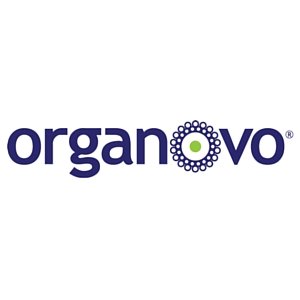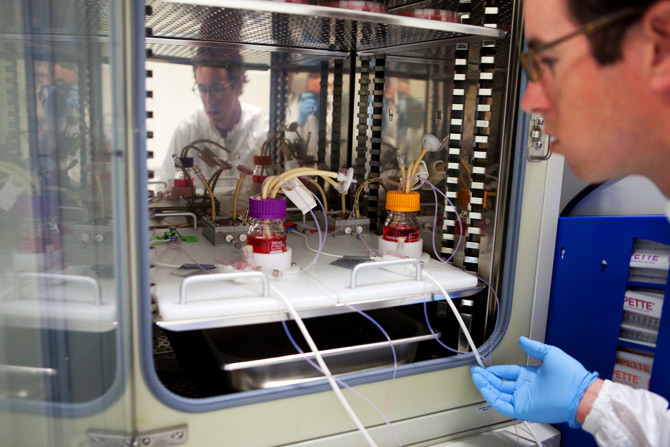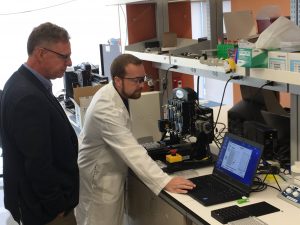 Remember when movies like The Island seemed like a scary yet foreseeable future? In 2005, the sci-fi thriller introduced a compound inhabited by clones used for organ harvesting, as well as surrogates for wealthy people in the outside world. Actually, 3D technology is proving that the future looks quite different, with tissue engineering taking center stage, anticipating a possible future where organ transplants will not be needed to survive. One of the most well-known tissue engineering companies is San Diego-based Organovo. It has been actively developing a line of human tissues for use in medical research and drug discovery for years.
Remember when movies like The Island seemed like a scary yet foreseeable future? In 2005, the sci-fi thriller introduced a compound inhabited by clones used for organ harvesting, as well as surrogates for wealthy people in the outside world. Actually, 3D technology is proving that the future looks quite different, with tissue engineering taking center stage, anticipating a possible future where organ transplants will not be needed to survive. One of the most well-known tissue engineering companies is San Diego-based Organovo. It has been actively developing a line of human tissues for use in medical research and drug discovery for years.
The company, one of the first big players in bioprinting, was founded in 2007 by Keith Murphy and Gabor Forgacs with a focus on developing in vivo liver tissues to treat a range of rare, life-threatening diseases, for which there are few current treatment options other than organ transplantation. Organovo’s ultimate goal in developing their liver therapeutic tissue is to delay or reduce the need for a transplant. The firm is also trying to harness their foundational ability to characterize specialized human cells and to 3D bioprint functional tissues to create novel in vitro toxicology and liver disease modeling platforms.
According to Organovo, initially the new liver tissue will be ideal for treating chronic liver failure, a disease that attacks millions of people around the world. It could also be used for pediatric metabolic liver diseases. The implementation of the developed tissue could solve both conditions. The number of Americans affected by chronic liver failure is higher than previously estimated and affects 1.8% of the U.S. adult population – that’s over 4.5 million Americans. Furthermore, the global prevalence of liver disease accounts for approximately 2 million deaths per year, making liver transplantation the second most common solid organ transplantation, yet less than 10% of global transplantation needs are met at current rates. It is no wonder Organovo is targeting the illness, and might also help reduce the high cost of living with chronic liver disease.
In 2014, they announced successful printing of the liver tissue with the NovoGen MMX Bioprinter, that functioned as a real liver for at least 42 days, which the company later sold commercially as ExVive Liver Tissues for preclinical drug discovery testing. The in-house 3D printed tissue could change the way pharmaceutical companies develop, discover, and test new drugs before bringing them to market. Organovo later partnered with various universities around the world to attempt to 3D print fully functional human kidney tissues, as well as pharmaceutical and cosmetics giants, like L’Oreal to advance the development of synthetic skin tissue. Moreover, the company’s first bioprinted products are expected to make it to the U.S. Food and Drug Administration (FDA) in 2020 to begin clinical testing. Development of a healthy therapeutic liver tissue patch could treat a broad range of liver diseases, according to the company, claiming it’s objective will be to implant the patch to restore function or offset the deficiencies related to the condition.
Last year, Taylor J. Crouch, Organovo’s CEO said that “in each case, our objective in implanting a healthy tissue patch to restore function or offset the deficiency of a specific enzyme abnormality, with the ultimate goal of delaying or reducing the need for a transplant.” Since receiving the Orphan Designation (a special status given to a drug to treat a rare disease or condition) from the FDA in 2017 for 3D bioprinting therapeutic liver tissue treatment of alpha-1 antitrypsin (A1AT) deficiency, the company has been testing 3D printed human liver tissue in animals, laying human cells into a configuration that creates a tissue which is functional for human testing, and presented data on the performance of tissues in animal models for A1AT and hereditary tyrosinemia Type 1 (HTT1) at industry meetings over the past several months.

Presenting data that indicates therapeutic potential of bioprinted human liver ‘patches’ in a disease model
Samsara Sciences, a subsidiary of Organovo, commercializes human liver and kidney cells obtained by 3D printing for use in research applications since 2016. They transform donated tissue at the end of a birth-life-death cycle into millions of opportunities for learning. Through manipulation of DNA, RNA and human cells the company will, in the future, be able to create the tissues which repair damaged organs, boost the functions of organs or replace missing functions. But although Organovo’s spotlight is on liver therapeutic tissue, they are also pursuing multiple therapeutic indications including end-stage liver disease and a select group of inborn errors of metabolism (IEMs), which demand an urgent need for novel treatments due to the critical shortage of donor organs.
So, what makes Organovo special? For starters, the bioprinting firm was one of the most instrumental pieces in the development of 3D bioprinters able to develop liver and kidney tissue for drug discovery applications, and in 2010, they printed the first blood vessel. The key to their success lies in replicating native form and function, their 3D human tissues offer many advantages over standard cell-culture platforms due to the fact that three-dimensionality is achieved without dependence on integrated scaffolding or hydrogel components, that would not be found in native tissues, they have a tissue-like density with highly organized cellular features, such as intercellular tight junctions and microvascular networks.
Furthermore, additive manufacturing for medical applications will most likely be extremely lucrative, with a report suggesting that it could turn into a 2 billion dollar industry, bioprinting companies are racing to come out first. And with it’s ExVive artificial tissues in full force, it could become one of the leaders in the industry. Organovo’s revenues have already been climbing in the past three years, especially since their uptake of the tissue research is still going strong. Collaboration and grants brought in revenues over the past years, thanks to the company’s ongoing collaboration with Merck, one of the largest pharmaceutical companies in the world.
They say that their goal is “to build living human tissues that are proven to function like native tissues, with reproducible 3D tissues that accurately represent human biology.” And while their current products revolve mostly around providing in vitro tissue models for drug testing, they are actively investing in developing artificial organs ready for transplant. The liver is the only organ in the body that can regenerate by replacing lost or injured tissue; however, if the liver fails, most people began a long waiting process, hoping to receive a full or part of the organ via transplant. Organovo is trying to cut the waiting time, helping millions on the way. Still, within five years of a liver transplant, 25 percent of patients on average have died and within 10 years, 35 to 40 percent die. That means the rejection rate is pretty high, so how will companies help the body accept the 3D generated tissue in the future?
That is one of the big challenges for the companies pushing the technology and the medical community. Perhaps, in the same way scientists are teaching the body to accept new organs, they can help it embrace it’s own ‘retouched’ cells. Although the company remains cautious and prudent about their research, there is no doubt that a great many people are awaiting news about 3D printed ‘organoids’ that could some day replace organ transplantation.
Subscribe to Our Email Newsletter
Stay up-to-date on all the latest news from the 3D printing industry and receive information and offers from third party vendors.
Print Services
Upload your 3D Models and get them printed quickly and efficiently.
You May Also Like
Nikon SLM Solutions Sells SLM 500 to Primary Weapon Systems to Expand Suppressor Production
Primary Weapons Systems (PWS) is a Boise, Idaho-based manufacturer of suppressors, firearms, and related components. A subsidiary of Vigilant Gear and a sister company to aftermarket Glock slide manufacturer Lone...
3DPOD 261: Tooling and Cooling for AM with Jason Murphy, NXC MFG
Jason Murphy´s NXC MFG (Next Chapter Manufacturing) is not a generalist service; instead, the company specializes in making tooling. Using LPBF and binder jet, the company produces some of the...
HP and Firestorm Labs Form Partnership to Use Multi Jet Fusion 3D Printers in Deployable Factories
HP Inc., maker of a range of additive manufacturing (AM) solutions including the Multi Jet Fusion (MJF) ecosystem, has announced a partnership with Firestorm Labs, a developer of containerized, deployable...
3D Printing News Briefs, July 2, 2025: Copper Alloys, Defense Manufacturing, & More
We’re starting off with metals in today’s 3D Printing News Briefs, as Farsoon has unveiled a large-scale AM solution for copper alloys, and Meltio used its wire-laser metal solution to...



































